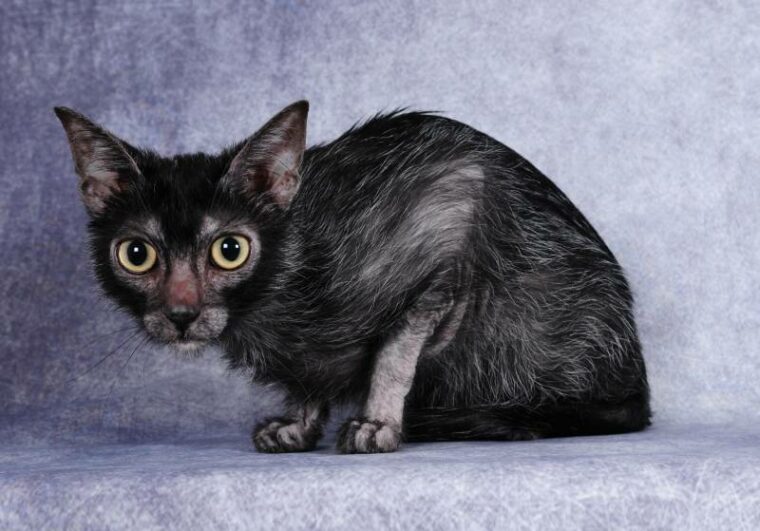
Lykoi cats, also known as “wolf cats” or “werewolf cats,” are extraordinarily rare, with unique coats derived from a natural mutation. Despite their “werewolf-like” appearance, they are friendly, intelligent, and sociable.
These cats have been around for roughly 20 years and are a relatively new cat breed. Not only do they have unusual coats, but they also have other traits that may surprise you. Read on to learn 13 surprising facts about the Lykoi cat.
The 13 Facts About Lykoi Cats
1. Lykoi Means “Wolf”
Lykoi is a Greek word that means wolf. Lykoi cats have interesting sparse coats derived from a natural mutation, giving them a werewolf-like appearance, so the name is fitting. However, people are under the misconception that these cats hail from Greece when, in fact, there have been many sightings in the United States.
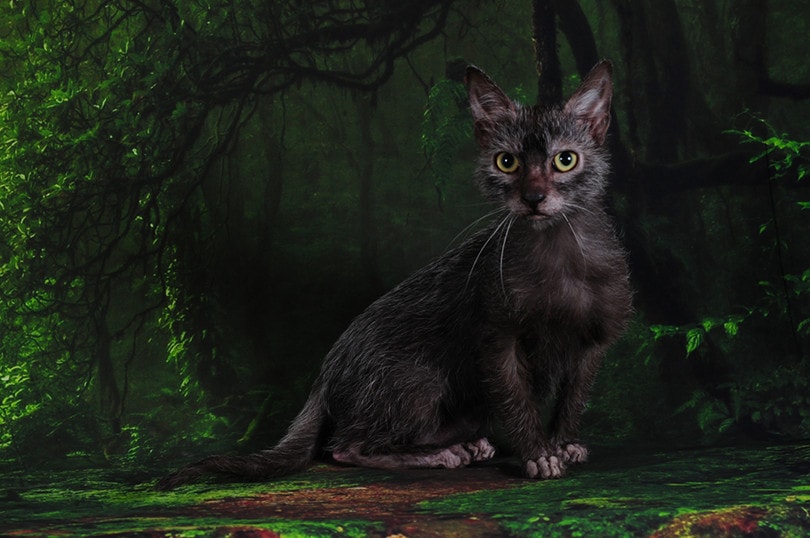
2. They Are an Experimental Cat Breed
The Lykoi cat has an interesting background. Now that we’ve mentioned they are not from Greece and have been spotted in the United States over the years, how did they come about?
These cats originated from the domestic shorthaired cat through natural mutation. Originally, it was believed they mutated from the Sphynx/Devon Rex cats, but this was proven incorrect through DNA testing. In 2011, two unrelated litters were discovered in Tennessee and Virginia, which sparked scientists to conduct extensive testing and start a breeding program.
3. They Are Almost Entirely Hairless
Some Lykoi cats are not completely hairless but have very thin patches of hair on top of their bodies. On the contrary, some may have dense coats. They have no undercoat, and the thin patches of topcoat give them a wolf-like appearance. Despite the coarse, shabby look, the hair is quite soft.
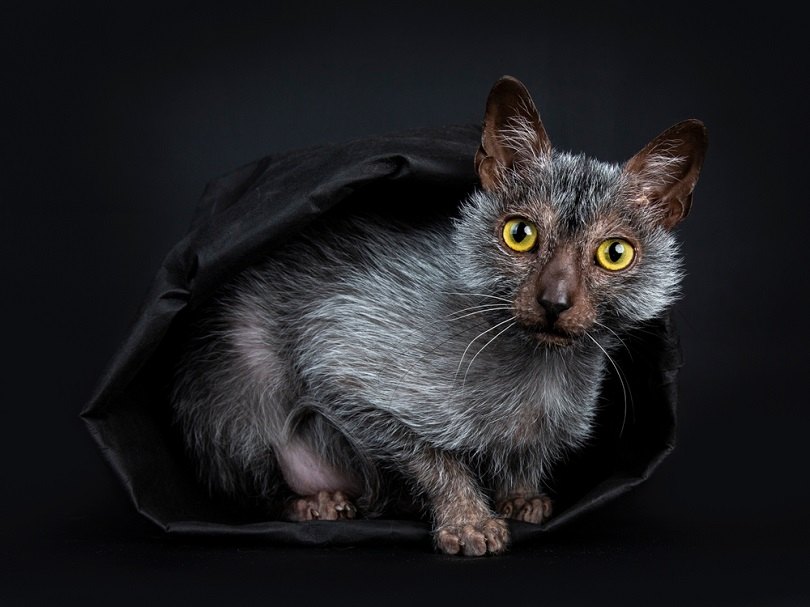
4. They Shed Excessively
You wouldn’t think these cats shed since they have hardly any hair, but it’s quite the contrary. Lykoi cats are heavy shedders and shed more than the typical domestic shorthair. They molt two to three times a year, and some even shed their entire coat. Interestingly, the hair can come back thicker or thinner each time they molt.
5. They Are Not Considered Hypoallergenic
Speaking of shedding excessively, the Lykoi cat is not considered hypoallergenic. However, given they have patchy hair spots, they don’t shed as much dander as other cats, which is an allergy trigger. Still, don’t let the sparse hair fool you. In short, if you’re looking for a hypoallergenic cat (there are no truly hypoallergenic cats), you’ll need to consider a different cat.
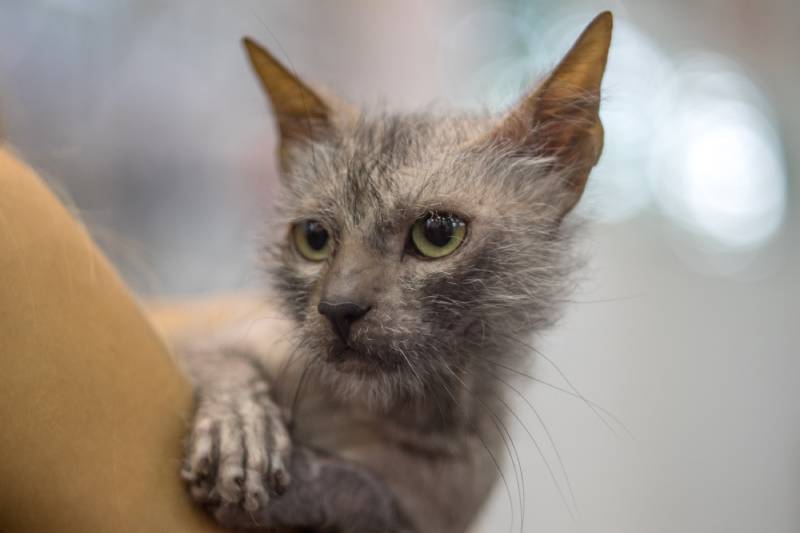
6. Lykoi Kittens Are Born with a Full Coat
That’s right—Lykoi kittens are born with a full coat of hair, but they lose it around 1 to 2 weeks of age, at which time they go almost completely bald. Then, the fur starts growing back in patches.
7. They Are Rare
If you’re in the market for a Lykoi, you’ll have trouble finding one. It’s estimated there are only 100 show-standard Lykoi cats in the world, and if you find one from a breeder, expect to pay anywhere from $1,500 to $2,500, depending on the breeder’s location.
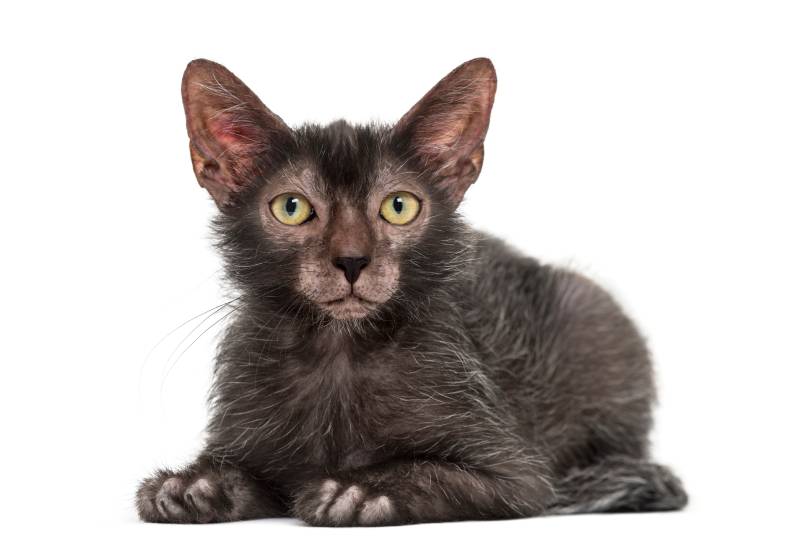
8. They Have Excellent Temperaments
The Lykoi is friendly, intelligent, social, and energetic. These cats are active and love to play. They also have a strong prey drive due to their feral background, and they may even pounce on you in a playful way. They are constantly on the move and are not lap cats by any means.
The Lykoi is always up for fetching, exploring, hunting, and anything else he can get into. They can learn tricks, given their strong intelligence, but they may be somewhat aloof with strangers at first.
9. They’re Naturally Slender
The Lykoi is a medium-sized cat with a slender body and weighs less than the average shorthair. The average height of a Lykoi is 8 to 10 inches, and the weight averages 6 to 12 pounds, with males weighing more than females.
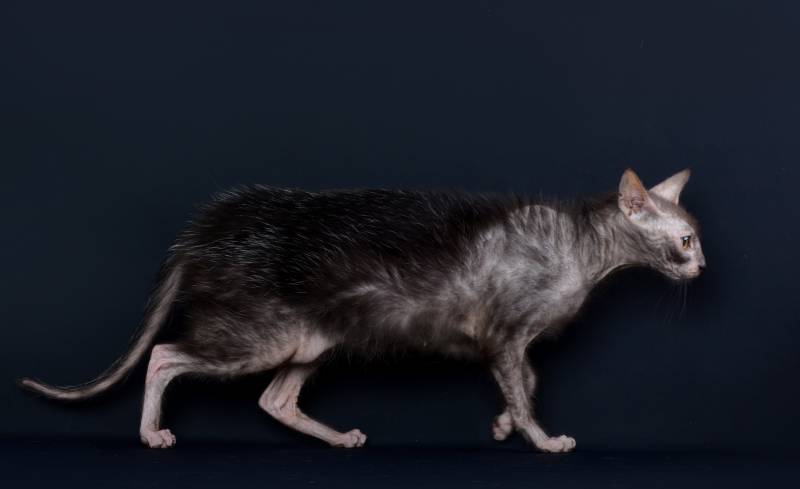
10. Training a Lykoi Is Easy
Dogs are obviously easier to train than most cats, but the Lykoi cat is among the few breeds that are intelligent enough to learn tricks. They have never-ending energy and don’t lay around much, so they are usually up for any activity. However, they can be independent and do things on their own terms, but they also love to show off.
These cats are quite adaptable and can learn to get along with other pets with early socialization. Take precautions around small pets, like hamsters or guinea pigs, as the Lykoi cat has a strong prey drive.
11. They Need Frequent Baths
Even though some have little hair, they require frequent baths. These cats are prone to skin problems due to their sparse coat and oily skin and will benefit from a bath once or twice a week to prevent blackheads. They are also susceptible to skin infections, making bathing these cats a vital part of their care.
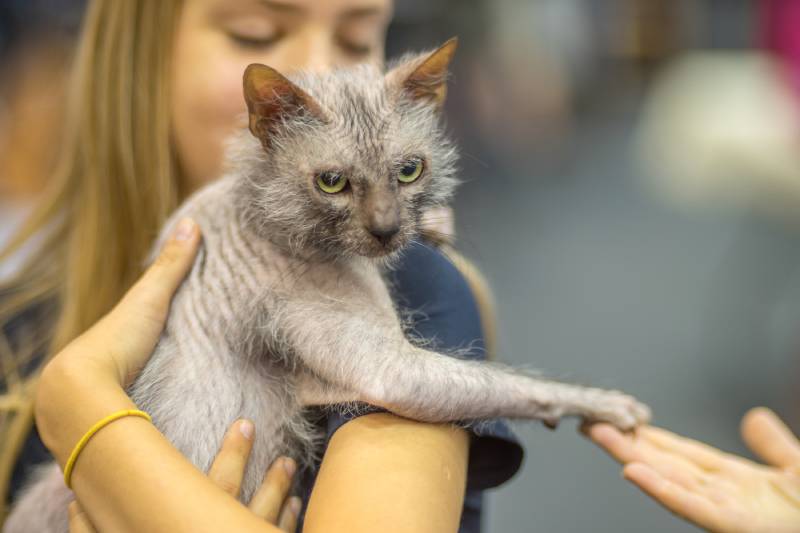
12. They Are Recognized by The International Cat Association
The International Cat Association (TICA) recognized these cats in 2017, making the Lykoi cat one of the newest breeds to be recognized by the association. However, in order to be recognized, the coat color must be black; the coat colors vary between white, gray, and black, but black is the standard.
13. The Skin Changes Color
These cats are rare gems, but a completely rare trait they possess is the skin changing colors. Typically, the skin is pink, but when exposed to sunlight, the skin changes to a darker color.
Final Thoughts
The Lykoi is undoubtedly one of the most interesting cats out there, and their unique appearance comes from a naturally occurring gene discovered not too long ago. A downfall is they are rare and hard to find, but if you do find one, you’ll have one of the most intelligent and interesting-looking wolf cats on the block.
If you are looking for one, ensure you check your local shelters, as some people may mistake their appearance for a feral cat.
Featured Image Credit: danilobiancalana, Shutterstock






